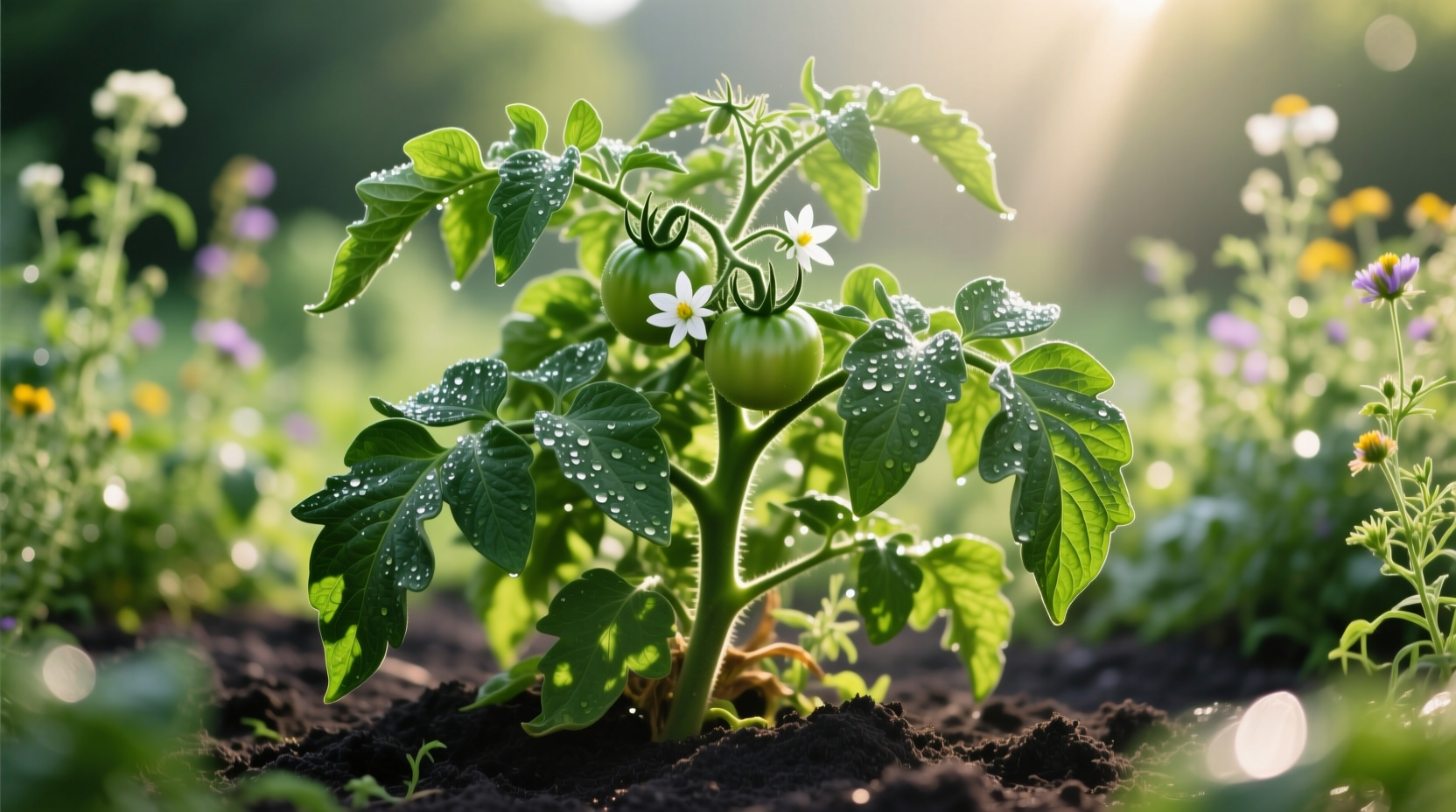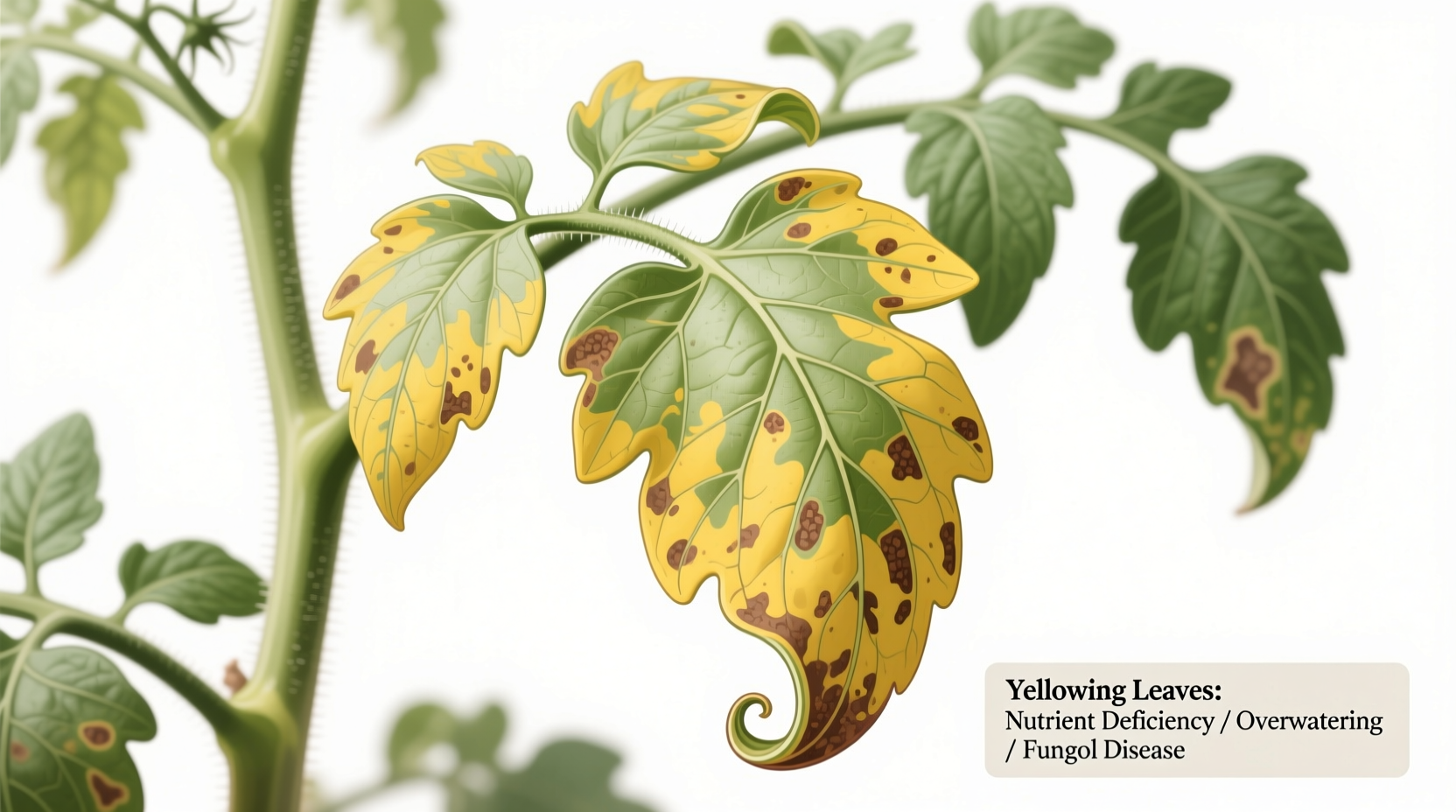If your tomato leaves are turning yellow, the most common causes are nutrient deficiencies (especially nitrogen or magnesium), improper watering, soil pH imbalance, or natural aging of lower leaves. This guide will help you diagnose the specific issue and provide actionable solutions to restore your plants' health.
Discovering yellow leaves on your tomato plants can trigger immediate concern. As a gardener, you've invested time, effort, and hope into your crop, and yellowing leaves often signal something's wrong. The good news? Most causes of yellow tomato leaves are treatable when caught early. This comprehensive guide walks you through a systematic diagnostic process to identify the exact cause affecting your plants and provides proven solutions based on horticultural science.
Quick Diagnostic Pathway: What Your Yellow Leaves Are Telling You
Before jumping to conclusions, follow this quick assessment to narrow down potential causes:
- Location of yellowing: Are lower leaves yellowing first? (likely natural aging or nitrogen deficiency) Or are new growth leaves yellow? (suggests iron or magnesium deficiency)
- Pattern of discoloration: Uniform yellowing? (nutrient deficiency) Or yellow between veins with green veins? (specific nutrient issue)
- Additional symptoms: Spots? Wilting? Curling? These details help pinpoint the exact problem
- Watering history: Have you recently changed your watering routine or experienced extreme weather?
Top 5 Causes of Yellow Tomato Leaves (and How to Fix Them)
1. Nutrient Deficiencies: The Most Common Culprit
Nutrient imbalances account for approximately 65% of yellowing leaf cases according to University of Minnesota Extension data. Each deficiency creates distinct visual patterns:
| Nutrient | Yellowing Pattern | Additional Symptoms | Solution |
|---|---|---|---|
| Nitrogen | Older leaves turn uniformly yellow first | Stunted growth, pale new leaves | Blood meal, fish emulsion, or balanced organic fertilizer |
| Magnesium | Yellow between veins on older leaves | Purple stems, leaf curling | Epsom salt solution (1 tbsp/gal water) |
| Iron | Yellow between veins on new growth | Complete yellowing in severe cases | Chelated iron supplement, adjust soil pH |
Soil testing through your local cooperative extension service provides the most accurate diagnosis. The USDA National Agricultural Statistics Service recommends testing soil every 2-3 years for vegetable gardens to maintain optimal nutrient balance.
2. Watering Issues: Too Much or Too Little
Improper watering causes nearly 20% of yellow leaf cases. Tomato plants require consistent moisture but cannot tolerate waterlogged soil. Here's how to identify and correct watering problems:
- Overwatering signs: Yellow lower leaves, wilting despite wet soil, root rot (brown, mushy roots)
- Underwatering signs: Crispy yellow leaves, dry soil several inches down, leaf curling
Establish a proper watering routine: Water deeply 1-2 times weekly (more in extreme heat), aiming for 1-1.5 inches of water. Always water at the base of plants to prevent fungal diseases. Mulching with straw or wood chips helps maintain consistent soil moisture.
3. Soil pH Imbalance: The Hidden Factor
Tomatoes thrive in slightly acidic soil with a pH between 6.2-6.8. When soil becomes too alkaline (above 7.0) or too acidic (below 6.0), plants cannot absorb nutrients properly, causing yellowing leaves even when nutrients are present.
If your soil test shows pH imbalance:
- pH too high (alkaline): Apply elemental sulfur or use acidic fertilizers
- pH too low (acidic): Add garden lime following package instructions
Adjust pH gradually over several weeks to avoid shocking your plants. The Penn State Extension recommends retesting soil pH after any amendments to ensure proper adjustment.
4. Pests and Diseases: When Yellowing Signals Trouble
Certain pests and diseases cause distinctive yellow patterns:
- Spider mites: Fine webbing, stippled yellow leaves
- Fusarium wilt: Yellowing on one side of plant, V-shaped yellow patterns
- Verticillium wilt: Yellowing between veins, starts on lower leaves
- Aphids: Sticky residue, curled yellow leaves
For pest issues, start with organic solutions like insecticidal soap or neem oil. For fungal diseases, remove affected leaves immediately and apply copper fungicide if needed. Prevention through crop rotation and proper spacing reduces disease risk significantly.

5. Environmental Stress: Beyond Your Control
Sometimes yellowing results from factors outside your direct control:
- Temperature extremes: Sudden heat waves or cold snaps cause temporary yellowing
- Excessive sunlight: Intense afternoon sun can bleach leaves
- Natural aging: Lower leaves naturally yellow as plant matures
Context boundaries matter here: If only the oldest 1-2 sets of leaves are yellowing while new growth remains green and vigorous, this is normal plant development. The Oregon State University Extension confirms that losing the lowest leaves as plants mature is a natural process that shouldn't concern gardeners.
When to Take Action: The Yellow Leaf Timeline
Understanding how yellowing progresses helps determine urgency:
- Days 1-3: Isolated yellowing on one or two leaves - monitor for spread
- Days 4-7: Yellowing spreading to multiple leaves - investigate cause
- Week 2: Significant yellowing with new growth affected - immediate action needed
- Week 3+: Widespread yellowing with stunted growth - plant may be beyond saving
Early intervention dramatically increases recovery chances. Most nutrient deficiencies show improvement within 7-10 days of proper treatment.
Preventing Future Yellowing: Proactive Plant Care
Implement these practices to maintain healthy green foliage throughout the growing season:
- Test soil before planting and amend as needed
- Use balanced organic fertilizer every 3-4 weeks
- Mulch to maintain consistent soil moisture
- Rotate crops annually to prevent soil-borne diseases
- Water early in the morning at soil level
- Prune lower leaves that touch soil to prevent disease
Remember that some yellowing on the lowest leaves is normal as plants mature. Focus on overall plant vigor rather than perfection on every leaf.
When Yellow Leaves Signal Serious Trouble
While most yellowing is treatable, watch for these red flags indicating potentially fatal issues:
- Yellowing accompanied by wilting that doesn't improve after watering
- Dark streaks in stems when cut open
- Foul odor from roots or soil
- Rapid yellowing affecting the entire plant in days
These symptoms often indicate severe fungal diseases like fusarium wilt that may require removing the plant to protect others. The American Phytopathological Society recommends destroying infected plants rather than composting to prevent disease spread.
Final Thoughts: Healthy Plants Start with Observation
Successful tomato growing depends on regular observation and timely intervention. By understanding what your yellow leaves are communicating, you can address issues before they compromise your entire harvest. Start with the most common causes—nutrient deficiencies and watering issues—as these account for the majority of yellowing cases. With proper diagnosis and treatment, your tomato plants can recover and produce a bountiful harvest.











 浙公网安备
33010002000092号
浙公网安备
33010002000092号 浙B2-20120091-4
浙B2-20120091-4